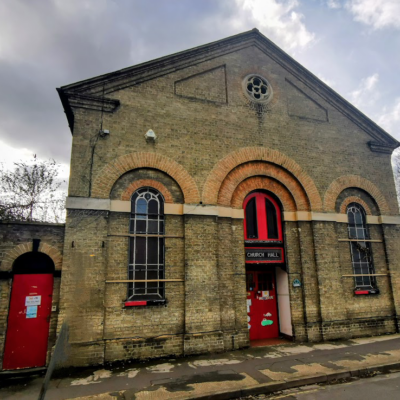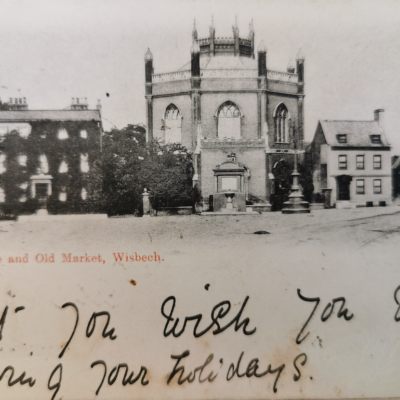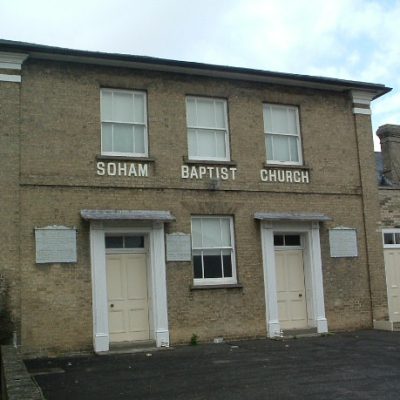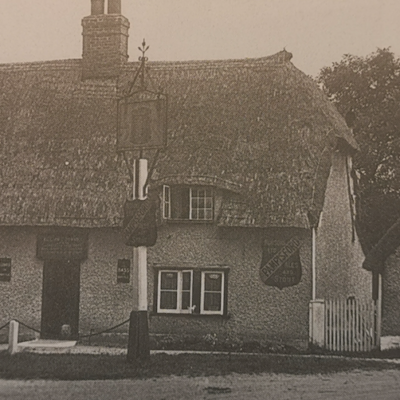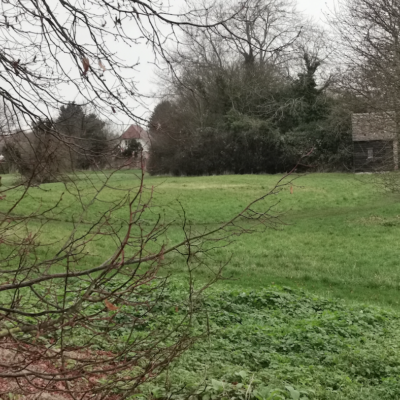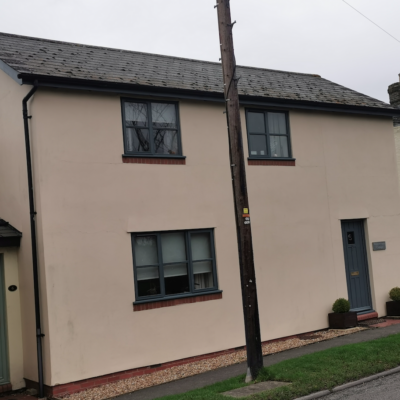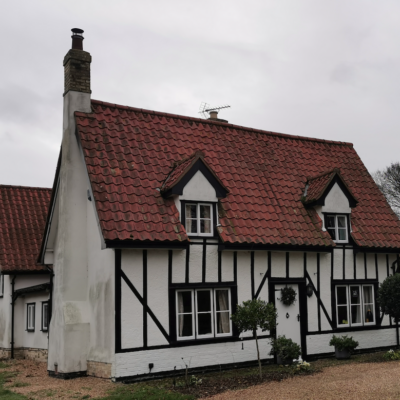Search by topic
- archaeology
- Building of Local Interest
- chapel
- charity
- church
- crime
- dressmaker
- fire
- Great Eastern Railway
- Listed building
- Mapping Relief
- medieval
- oral history
- poverty
- Public House
- Religious House
- Roman
- scholar
- school
- Then and Now
- tudor
- women
- work
- world war one
- world war two
Search by text
Chapel Hill, Haslingfield
History of Chapel Hill, Haslingfield
This is the location of footpath that runs west from the road; it is called Mare Way and, according to the ‘Walk and Look Round Haslingfield’ guide pub.1994, may have prehistoric origins. It probably continued to Harston passing the round barrows on Money Hill.
At the junction with the road there used to be a farm building known as Chapel Bush and before that a Chapel of Our Lady of White Hill. This was a popular place of pilgrimage at Easter and was en route to the shrine of St Etheldreda at Ely.
In 2024 the Chapel Hill area was included in the route for the East West Railway from Cambridge to Oxford. Local resident Jennifer Gore wrote this article:
FROM ERMINE STREET TO CHAPEL HILL – A 1000 YEARS OF HISTORY AND SO MUCH MORE
Did you know….
The Mare Way which ends up on Chapel Hill is part of an ancient green road from Ermine Street. At the top of Chapel Hill pilgrims visited the Shrine to Our Lady of White Hill before descending to All Saints Church Haslingfield, crossing the River Rhee and heading off to Ely Cathedral.
There are many tales passed down through the generations as to the chapel’s origins and proof of its existence is recorded in documents from Bishop Alcock in 1488. He writes of chapel repairs to the ‘Chapel of BVM Whightehill’. Although it is presumed at this time ‘whighte’ was referring to the white chalk clunchpits and quarry, the derivation of whighte could be ‘weyte’ which meant wait. This sounds likely as the hill was an important lookout point over the Saxon settlement.
Rev. E. Conybeare in his ‘History of Cambridgeshire’ written in 1897 describes it as once being a famous place of pilgrimage. The Mare Way or Mary Way ended at the point where 84 churches could be visible from Ely in a sweeping view from Ely across as far as the Dunstable Downs.
It is recorded that the chapel was seen to contain a huge pair of shackles believed to be those with which Lord Scales was kept imprisoned in France in the Battle of Crecy, at the time of King Edward III. They were placed in the chapel in thanks for his escape.
A small roadside cottage known as Chapel Bush stood on the site of the chapel until early in the 20th Century. It can be seen on the Ordnance survey maps from 1887. A bulla of Pope Martin V (1417-1431), a 1 1/2 inch lead disc, was found on the site in 1897.
It is a tradition of All Saints Church to walk up Chapel Hill on Easter morning to witness the dawn. The vicar leads a prayer and a hymn is sung around a lighted brazier. A flame from the brazier is taken down to the church in a lantern from which the Paschal candle is lit at the Easter morning service.
The experience is deeply moving and a truly ancient link to the past. Chapel Hill, to me personally, is as significant as Avebury or Stonehenge. It is such a spiritual and significant point as the flat area of Cambridge and fenland stretch out before us. For 700 years the church has nestled at the base of the hill where thousands trod on their way to the awe inspiring Ely Cathedral.
The image of a railway cutting slicing through the hill and stretching out over the fields and over the river to Harston is truly appalling. A desecration of this region’s history and the first chalk hill rising out of the flat landscape of Cambridgeshire.
…………………….
Contribute
Do you have any information about the people or places in this article? If so, then please let us know using the Contact page or by emailing capturingcambridge@
License
This work is licensed under CC BY-NC-SA 4.0





